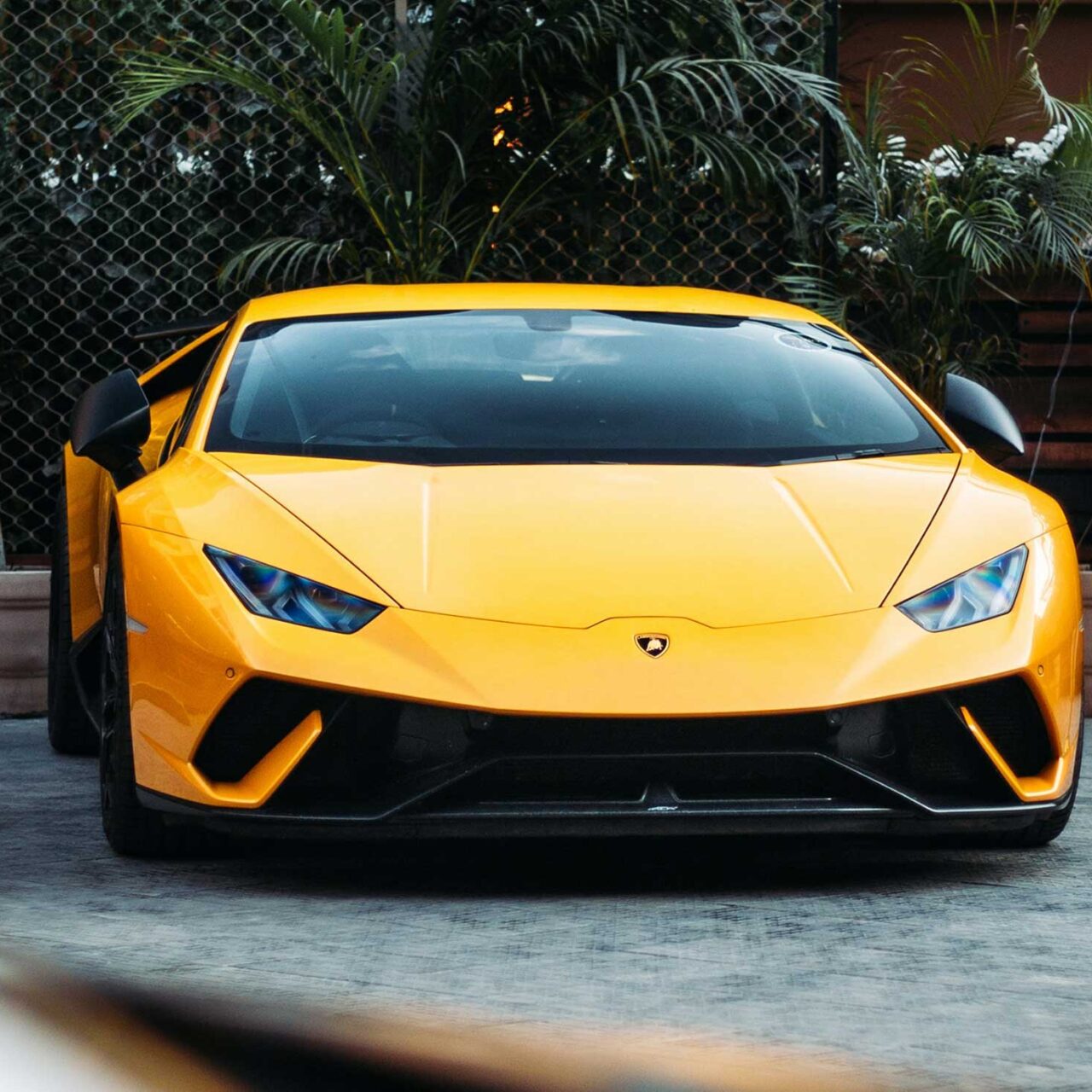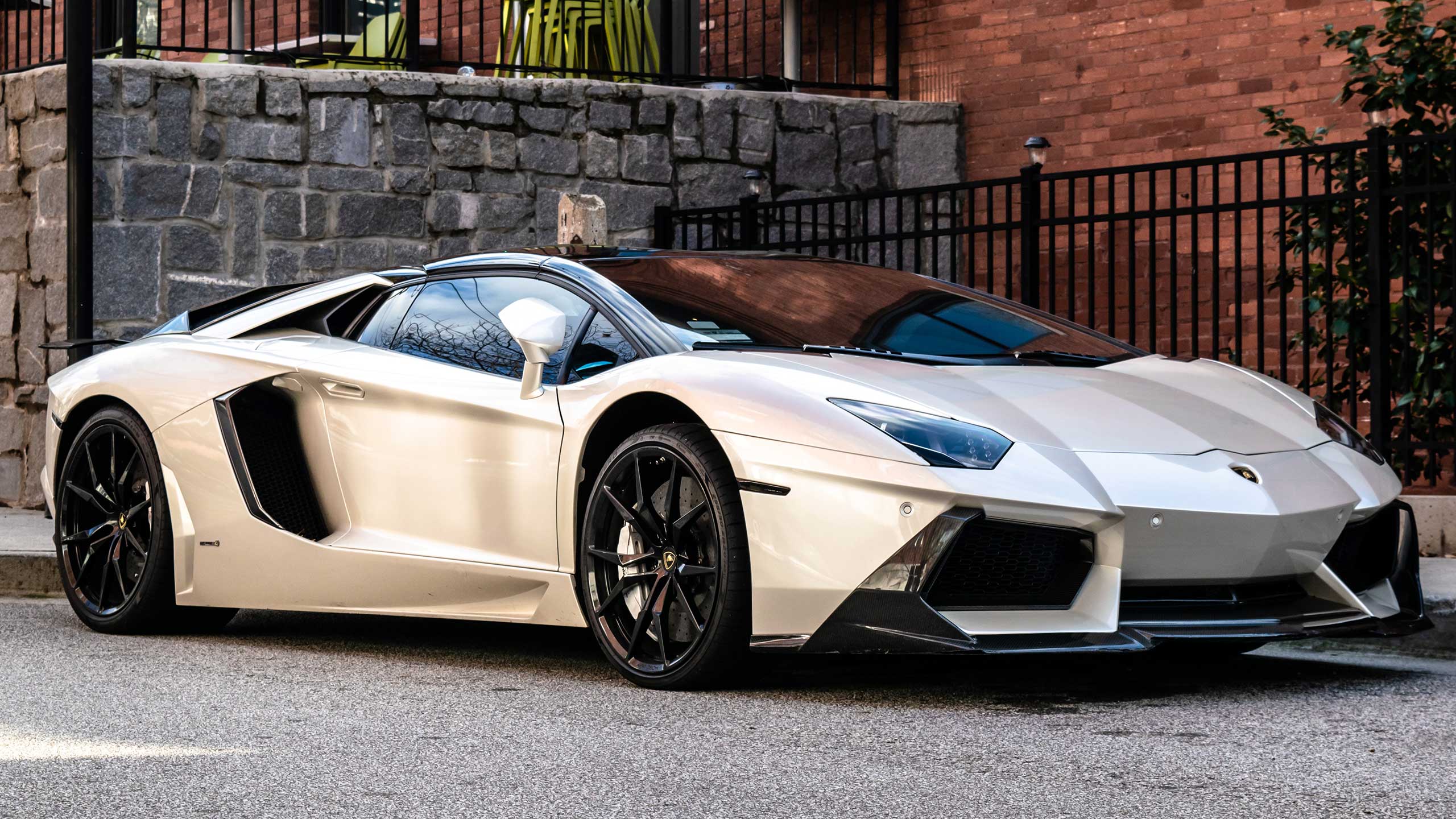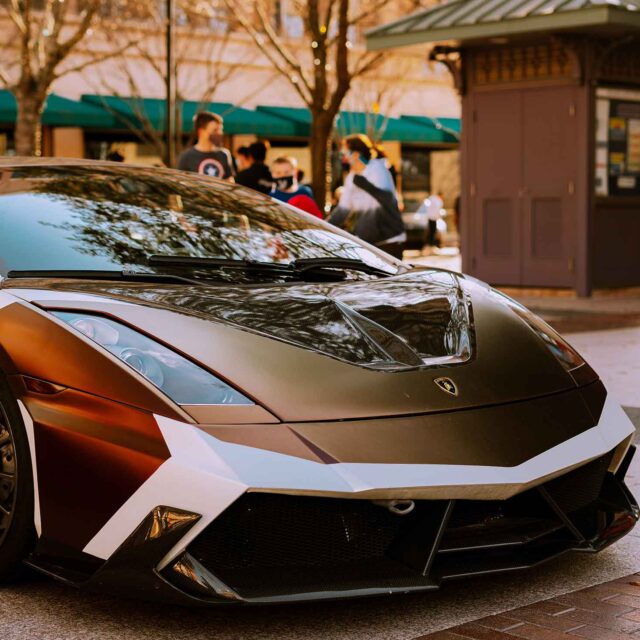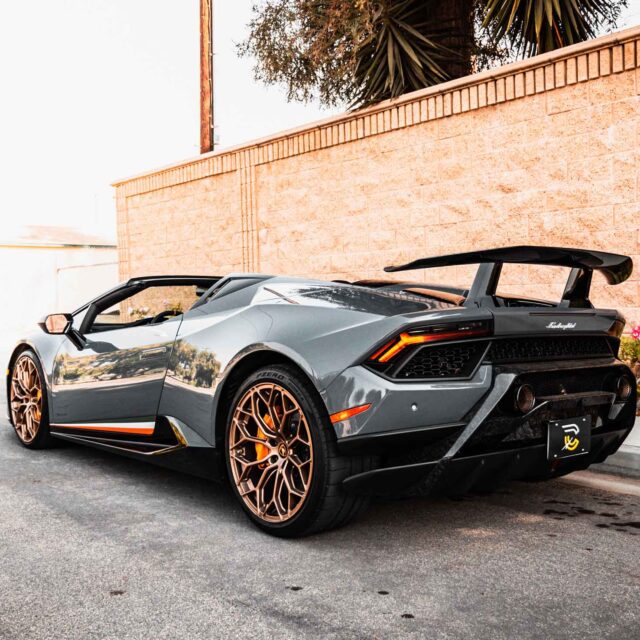Ferruccio Lamborghini, the imaginative businessman who named his automobiles after gallant, dangerous fighting bulls, was born in 1916 under the sign of Taurus. He began his tractor manufacturing business in the early post-war period. In May 1963, he founded Automobili Ferruccio Lamborghini, where he had no problem working on the automobiles himself.
When Ferruccio Lamborghini said he would make a great sports vehicle to compete with Ferrari many people felt he was crazy. By May 1963, he had founded Automobili Ferruccio Lamborghini and bought land in Sant’Agata Bolognese, twenty-five kilometres from Bologna, to create a huge, contemporary facility.
Lamborghini’s 1966 Geneva Motor Show debut shook up the Grand Touring market. The new Lamborghini Miura was low-slung, sleek, and sensuous, with a peak speed of 300 km/h. It revolutionised sports cars.
Lamborghini’s global popularity came between 1969 and 1970. The Bull brand symbolised top-level performance, excellent quality, and exclusivity. Bertone’s bodywork and Bolognese engineering created quick, exhilarating cars.
Ferruccio began working with Bertone and Lamborghini’s principal engineer Giampaolo Stanzani on a new proposal. In 1971, when the LP500 (also known as the Countach) was presented, it was evident that Lamborghini had once again nailed the mark.
LP stood for “Longitudinale Posteriore,” identifying the engine’s position and direction. The 12-cylinder engine was increased to 4,971 cc for 440 horsepower and positioned beneath the cockpit. The gearbox and differential were in a single block behind the engine, and the drive shaft went through the crankcase. The profile was developed with a single continuous curve that connected the nose to the tail panel, curved like a hexagon. Incredibly low to the ground, forceful, and almost scary, the first LP500 was also very clean. It was another masterpiece from Marcello Gandini, Giampaolo Stanzani, Nuccio Bertone, and Ferruccio Lamborghini.
The Countach’s early success echoed the Miura’s.
By the late 1960s and early 1970s social and labour upheaval unnerved all enterprises, notably northern Italy’s engineering firms. This arrangement was unpleasant for Lamborghini, who was used to having direct control over his firms. In 1972, he sold his majority part to Georges-Henri Rossetti and his remaining shares to René Leimer. The firm’s founder, who created the first eight years’ exceptional growth, had gone.
As soon as the firm went into insolvency, multiple bidders were interested in buying it because of its iconic brand. Jean-Claude and Patrick Mimran, proprietors of a Senegalese sugar empire and sports car aficionados, were given the corporation. NAL was founded in 1981. Giulio Alfieri was hired as head engineer.
On June 12, 1998, Audi and Lamborghini sign a letter of intent, and the last Indonesian shareholder’s shares were transferred to Audi on July 27, 1998.Lamborghini sought Audi and other top automakers for technological help. Audi engineers returned to Germany with encouraging comments on the company’s status, new management, and automotive development activities.
1964 saw the first production Lamborghini sports vehicle. The 350 GT was successful in performance and design with aluminium bodywork, independent suspension, and four-disc brakes.
The revised 400 GT is Lamborghini’s in 19666 was the first genuine 2+2 four-seater. A 4-liter 12-cylinder engine powers this sumptuous grand tourer.
The 1968 Espada reincarnated the Italian grand tourer with its big saloon, wide trunk, and powerful V12 engine. It was the first monocoque Lamborghini. The Espada was Lamborghini’s greatest seller from 1968 until 1978, despite engine and interior revisions.
The Jarama in 1970 was the progression of the Islero and was developed for gentlemen drivers. This polite sports vehicle quickly became Ferruccio Lamborghini’s favourite. It was followed by the Marcello Gandini-designed Urraco, a four-seat sedan with a 2.5-liter V8 engine that was enlarged to three litres in 1974. 1976 brought a 2.0-liter engine.
The first-generation Countach, LP 400 in 1976, was stunning and fast. Its 4-liter V12 engine produced 375 horsepower and hit 309 km/h. The Countach was a renowned Lamborghini 1971 MIURA with a distinctive look. The two-seater from Sant’Agata revolutionised the sports automobile with a transverse mid-mounted V12 engine and distinctive “eyelashes.” When it debuted, the Miura had a peak speed of 280 km/h and 0 to 100 km/h in 6.7 seconds.
The 54-unit Urraco version had a sedan design and a mid-mounted 250-hp V8 engine, achieving 260 km/h. In 1976 The Silhouette was the first Lamborghini with a Targa top.
The 1981 Jalpa was the final Lamborghini with a 3.5-liter V8 engine, enabling enhanced handling and driving comfort. Although a natural progression of the Silhouette, it featured a fresh design.
1986 saw the first Lamborghini off-road vehicle possessed supercar performance despite its size and weight. The LM002 reached 210 km/h with its strong V12 engine and all-wheel drive. It had an aluminium-and-fiberglass body and Pirelli tyres.
The 1990 Diablo topped the super sports vehicle class with a peak speed of 320 km/h and 0 to 100 km/h in 4.5 seconds. Wide, low, and futuristic, this supercar of the future became a favourite among automobile fans, exactly like Miura and Countach.
The Two-door, two-seater Murcielago influenced by aeronautics arrived in 2001. It had a mid-engine V12, transmission with the gearbox situated in front of the engine, and permanent four-wheel drive for optimal weight distribution.
The 2003 Gallardo. A pure, clean, and dynamic daily sports vehicle. Based on an Italdesign-Giugiaro design, Lamborghini added its radical design characteristics.
The Murciélago Roadster continued the 350 GTS’ 12-cylinder roadster legacy in 2004. Driveability, comfort, and safety behind the wheel were the hallmarks of this meticulously designed homage to Italian convertible car history. The roadster version of the Murcielago variant was pure, practical, and sporty, with a driver-focused cabin. The exterior’s asymmetrical form was also duplicated inside, producing a unique Lamborghini model. The Murciélago LP 640 coupé’s performance and innovation was defined by its longitudinal rear engine location and 640 horsepower. Significant body design and mechanical advances make this vehicle the most extreme and quickest in its category.
Lamborghini’s soul was captured in a high-performance road car influenced by aeronautics. The Italian technical gem that was the Revention has one of the world’s most powerful 12-cylinder engines.
The enhanced performance and dynamics of the LP 560-4 Spyder Gallardo 2008
made it the benchmark for open-air super sports vehicles. This car continued the Gallardo LP 560-4’s engineering and design achievements. Sporty and aggressive attitude mixed with the Gallardo LP 560-4’s grace and simplicity, creating a vehicle that stood out for its design, driving enjoyment, luxury, utility, and safety. Gallardo LP 560-4 was great.
Lamborghini’s soul was captured in a high-performance road car influenced by aeronautics. This Italian technical gem has one of the world’s most powerful 12-cylinder engines.
Showing Lamborghini’s competence in lightweight construction and carbon fibre, the 2009 Murciélago LP 670-4 Superveloce had a 6.5-liter V12 and a 100-kg weight decrease.
A sporty, high-performance variant featuring rear-wheel drive and a two-wheel ESP system, the Gallardo RWD 2009 combined unparalleled driving enjoyment and safety.
The limited-edition 2009 Murciélago LP 650-4 roadster had a 650-hp, 6.5-liter V12 and permanent all-wheel drive. The exterior was Grigio Telesto (grey) while the front spoiler and door sills were Arancio LP 650-4 (orange).
In 2010 this restricted special version highlighted Lamborghini’s expertise in carbon fibre technology with a weight-to-power ratio of 1.75 kg/hp. Lamborghini’s Sesto Elemento combined utility and technology.
Extreme performance and open-air driving combine in this sports automobile. The Gallardo Spyder LP 570-4 with Performante’s agile design makes it excellent for high speed, with or without the top.
In 2011 this unique version of the most iconic Lamborghini vehicle ever was a homage to Italy’s 150th anniversary of unification. The Gallardo Tricolore has exceptional road-holding and well-tuned assistance systems. The Gallardo RWD Spyder was a fantastic sports vehicle with superb agility and handling, suited for aggressive drivers. Its design maximised stability.
The Aventador Coupé in 2011, created to redefine performance, mixes Lamborghini legacy with cutting-edge innovation. Its crowning glory is the V12 engine, but the excitement keeps flowing thanks to its dynamic and muscular styling. The 2013 Aventador Roadster’s carbon fibre monocoque is its crown gem. A supercar that blends the sportiness and power of a 6.5-liter V12 with the grace and vanity of a roadster.
Unprecedented aerodynamics and cornering stability in a road-legal racing prototype. The lightweight carbon fibre chassis and twelve cylinders guaranteed the 2013’s Veneno’s performance. On-road racing prototype aerodynamics. This Lamborghini has aeronautics-inspired design, extraordinary proportions, exhilarating performance, and cornering stability.
In 2014 Aventador met Pirelli. The special Aventador Pirelli series incorporates bespoke equipment built by Lamborghini’s Centro Stile, adding to the Aventador’s distinctive qualities, like the carbon fibre monocoque and 12-cylinder engine.
The Huracán Coupé was designed for optimum performance and comfort without compromising control or driving pleasure. This model can meet any driving requirement thanks to Lamborghini’s ANIMA technology.
The Superveloce in 2015 was designed to be the Lamborghini with the sportiest DNA, due to a naturally aspirated V12 engine, technical solutions focused on extreme lightness, and a range of unique technology features. The Aventador SV Roadster provides open-air racing. This ultra-sporty variant focuses on performance, full control in all circumstances, a sportier V12 engine, and special Italian-made interiors.
With the Huracán Spyder, hyper sports cars became coupés. Lamborghini’s ANIMA (Adaptive Network Intelligence Management) technology allows this contoured and seductive model to respond to any driving necessity.
The Aventador S follows in the footsteps of the Miura, Islero, Countach, and Urraco. LDVA’s distinctive design and 740-hp V12 engine combine with advanced technologies (Lamborghini Dinamica Veicolo Attiva,
Lamborghini Active Vehicle Dynamics).
Lamborghini Ad Personam created the Muira Homage special edition Aventador Coupé to honour the Miura’s 50th anniversary. This special model was inspired by the Lamborghini V12’s precursor.
The Huracán’s immense power with a new livery inspired by aviation history in 2016. Aggressive but beautiful, the Huracán Avio was a salute to the Air Force that offers top performance and optimum comfort, including a driver-friendly cabin. The Huracan RWD Spyder mixed flair and performance, with a distinctive external design and a V10 engine that drives the rear wheels, creates a vehicle that makes every drive an adrenaline thrill. The soft top opens in 17 seconds.
A homage to Ferruccio Lamborghini’s 100th birthday that symbolises outstanding design and engineering.
The 2016 Centenario, was a high-performance variant with a carbon fibre monocoque and bodywork with rear steering. Its 770-hp V12 engine allows 0 to 100 km/h in 2.9 seconds. The 2016 limited-edition Centenario is one of the world’s most rare automobiles and offers a unique open-air experience.
A hyper sports automobile that elevates performance to new heights. The Huracán Performante was designed to be the quickest, therefore its weight, engine power, chassis, and active aerodynamic system (ALA) were all modified. The 2018 Huracán Performante Spyder uses Forged Composites®, a hybrid aluminium and carbon fibre chassis, and the ALA (Lamborghini Active Aerodynamics) system to attain the greatest levels of elegance and performance. This is the most powerful open-top Huracán.
Finally, the 2021 Huracán EVO Fluo Capsule offers five external and interior variants that blend matte and bright colours. Verde Shock, Arancio Livrea, Celeste Fedra, Arancio Dac, and Giallo Clarus liveries contrast with the full-black interior.






